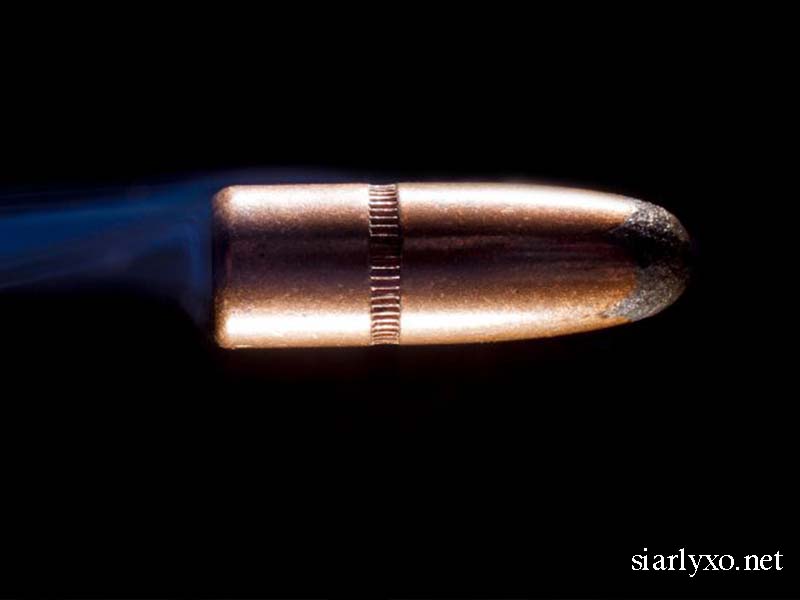When discussing firearms, one of the most common questions is about the speed at which a bullet travels. The velocity of a bullet, often referred to as bullet speed, plays a critical role in determining the effectiveness of a shot, its impact on the target, and its ability to travel long distances. In this article, we’ll explore how fast a bullet travels, the factors that influence bullet speed, and what it means for various applications, from self-defense to military use.
Introduction to Bullet Travel Speed
The speed at which a bullet travels is typically measured in feet per second (fps) or meters per second (m/s). This speed is determined by the type of firearm, the bullet’s caliber, and the amount of gunpowder in the cartridge. Bullet travel is a vital factor in many areas, including ballistics, weaponry, and law enforcement.
What is Bullet Speed? Bullet speed refers to the velocity of a bullet as it leaves the barrel of a firearm. Different types of firearms, including handguns, rifles, and shotguns, can fire bullets at varying speeds. For example, bullets fired from rifles generally travel faster than those from handguns, making them more effective for long-range shots.
Bullet Speed by Firearm Type
The speed at which a bullet travels can be greatly influenced by the type of gun used. Let’s break it down by some common firearm types:
1. Handguns
Handguns, which are often used for personal defense or law enforcement, generally have slower bullet speeds compared to rifles. On average, a bullet fired from a handgun can travel at speeds ranging from 700 to 1,200 feet per second (fps). The most common handgun calibers, such as the 9mm or .45 ACP, tend to produce velocities toward the lower end of that range.
2. Rifles
Rifles, including those used in hunting, military operations, and long-range shooting, typically have much higher bullet velocities. Depending on the caliber, a bullet fired from a rifle can reach speeds from 1,000 to 4,000 fps. High-powered rifles, like the .223 Remington or .308 Winchester, can propel bullets at speeds well over 3,000 fps, while specialized sniper rifles can achieve even higher velocities, ensuring accuracy at long distances.
3. Shotguns
Shotguns differ from handguns and rifles in that they usually fire multiple pellets (shot) instead of a single bullet. The speed of these pellets is generally lower, with speeds ranging between 1,100 and 1,600 fps, depending on the type of load used.
Factors Affecting Bullet Speed
The speed at which a bullet travels can be affected by several factors. Understanding these factors can help explain why bullets from different guns travel at different speeds.
1. Barrel Length
One of the key determinants of bullet speed is the length of the gun’s barrel. A longer barrel allows the gunpowder inside the cartridge more time to burn, which produces more gas and increases the bullet’s velocity. This is why rifles, with their longer barrels, can propel bullets at much higher speeds than handguns.
2. Gunpowder and Bullet Caliber
The amount and type of gunpowder used in the cartridge, along with the size of the bullet itself, also impact bullet speed. Larger calibers generally contain more gunpowder, resulting in higher velocities. Conversely, smaller caliber bullets may travel at lower speeds due to having less propellant.
3. Bullet Weight
A heavier bullet will travel more slowly than a lighter bullet, assuming all other factors are constant. This is because heavier bullets require more energy to propel them, which can reduce their velocity. A common example is comparing a light 5.56mm round to a heavier 7.62mm round fired from a rifle. The heavier round travels slower but offers more energy upon impact.
4. Atmospheric Conditions
Environmental factors such as air pressure, humidity, and temperature can all influence bullet speed. For instance, higher altitudes, where the air is thinner, may result in faster bullet travel due to less air resistance. Conversely, colder temperatures can increase air density, slowing the bullet down slightly.
The Physics of Bullet Travel
Understanding how fast a bullet travels requires an understanding of basic physics, particularly the concepts of force, mass, and acceleration. When a bullet is fired, the gunpowder inside the cartridge ignites, creating a burst of gas. This gas exerts force on the bullet, propelling it out of the barrel at high speed. The force applied to the bullet, combined with its mass, determines its acceleration, which ultimately affects its travel speed.
The principle of inertia also comes into play. A bullet will continue to travel at its initial speed unless acted upon by external forces such as air resistance or gravity. However, as the bullet travels through the air, these forces gradually slow it down, which is why bullets don’t travel indefinitely at high speed.
Bullet Speed and Its Impact
The speed at which a bullet travels has a significant impact on its performance. Faster bullets tend to have higher kinetic energy, making them more lethal. Additionally, high-speed bullets are better at maintaining their velocity over longer distances, allowing for accurate shots at extended ranges.
1. Impact on Accuracy
High-speed bullets, such as those fired from rifles, are often more accurate at longer distances. This is due to the fact that faster bullets are less influenced by gravity and wind resistance, allowing them to travel in a straighter line. However, this increased accuracy comes at the cost of greater recoil, which can affect the shooter’s ability to control the firearm.
2. Effect on Target
Faster bullets create a greater transfer of energy upon impact, leading to more significant damage. The high velocity of a bullet results in a greater shockwave upon hitting the target, which can cause more severe injuries. This is particularly important in military and law enforcement contexts, where stopping power is crucial.
3. Speed and Range
The speed of a bullet also influences how far it can travel before losing its effectiveness. A faster bullet is able to maintain its speed over a longer distance, making it more effective for long-range shooting. However, all bullets eventually succumb to air resistance and gravity, which causes them to slow down and drop.
Real-World Examples of Bullet Travel Speed
Here are some examples of different bullets and their travel speeds:
1. .22 LR (Long Rifle)
One of the most commonly used ammunition types for target shooting, the .22 LR round is relatively small and light. The bullet typically travels at speeds of 1,200 to 1,300 fps.
2. 9mm Parabellum
This is one of the most popular handgun calibers, known for its balance of power and recoil. A 9mm bullet typically travels at a speed of around 1,100 fps, although this can vary slightly depending on the exact load.
3. .223 Remington
This rifle round is used by many military forces, including in the AR-15 platform. The bullet can travel at speeds exceeding 3,200 fps, which is significantly faster than handgun ammunition.
4. .50 BMG
Used in heavy sniper rifles and machine guns, the .50 Browning Machine Gun (BMG) round is known for its extreme power and long-range capabilities. A .50 BMG bullet can travel at speeds of 2,800 fps or higher.
Bullet Travel in Military and Law Enforcement
Bullet speed plays a crucial role in both military and law enforcement operations. In military combat, high-speed bullets ensure that targets at a distance can be neutralized with precision. Likewise, law enforcement uses high-speed rounds to provide stopping power, especially when dealing with high-risk situations.
Conclusion: How Fast Does a Bullet Travel?
The speed at which a bullet travels depends on several factors, including the firearm type, caliber, and environmental conditions. On average, bullets travel anywhere from 700 fps to over 4,000 fps, with rifles generally producing the highest velocities. Understanding bullet speed is essential for everything from ensuring accuracy to maximizing the effectiveness of a firearm in various scenarios. Whether in law enforcement, military, or sporting contexts, the speed of a bullet is a critical element that impacts the outcome of every shot.
By considering all the factors that influence bullet speed and travel, we can appreciate the importance of bullet velocity in real-world applications and how it affects both the shooter and the target.




